Imagine breathing cleaner, healthier air indoors every single day, without needing to think twice about what might be floating unseen around you. As we approach 2025, understanding indoor air quality sensors is more essential than ever for protecting wellbeing, ensuring compliance, and optimising comfort in every space.
This guide breaks down everything you need to know about indoor air quality sensors, offering a clear path to making informed decisions that benefit both individuals and organisations. We will explore why air quality matters, reveal the newest sensor technologies, provide practical advice on selecting and installing sensors, and highlight the trends shaping the future of healthy indoor environments. Let us empower you with the knowledge and confidence to take control of your indoor air.
Why Indoor Air Quality Matters in 2025
Indoor air quality sensors are rapidly becoming essential tools for maintaining healthy, productive, and safe indoor environments. With modern lifestyles keeping people indoors for nearly 90 percent of their time, the importance of monitoring air quality has never been clearer. The impact of air pollution indoors extends far beyond comfort, reaching into the realms of health, productivity, and environmental responsibility.
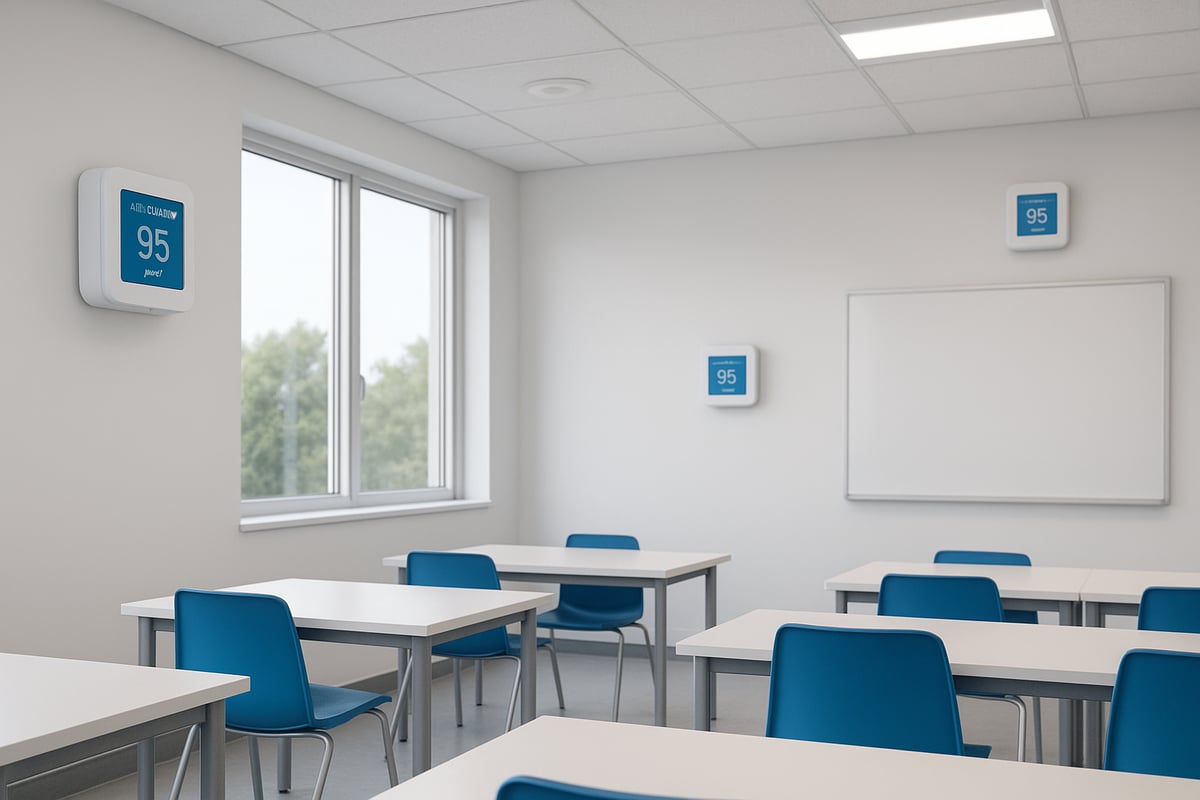
Health Impacts and Statistics
Understanding the health effects of indoor air pollution is vital in 2025. Indoor air quality sensors are designed to detect pollutants that can cause significant harm, such as particulate matter, volatile organic compounds, carbon dioxide, carbon monoxide, ozone, and microbial contaminants. These pollutants are recognised contributors to respiratory diseases, allergies, cognitive decline, and cardiovascular conditions.
Children, the elderly, and individuals with pre-existing health issues are particularly vulnerable. For example, schools experiencing poor air quality often see a rise in absenteeism due to asthma and allergy flare-ups. According to the WHO reports 3.8 million deaths annually from indoor air pollution, highlighting the urgent need for effective monitoring and intervention.
A quick look at the risks:
| Pollutant | Health Impact |
|---|---|
| PM2.5/PM10 | Asthma, lung disease |
| CO2 | Headaches, fatigue |
| VOCs | Allergies, irritation |
| CO | Poisoning, fatality |
| Ozone | Respiratory issues |
In response, regulatory standards in the UK and EU have set clear guidelines for safe indoor environments, making indoor air quality sensors a compliance necessity.
Economic and Productivity Considerations
The economic case for investing in indoor air quality sensors is compelling. Poor air quality in workplaces has a direct effect on productivity and employee wellbeing. Studies reveal that office buildings with improved air quality can experience up to an 11 percent boost in productivity.
Financially, the burden of air quality-related illnesses is significant for the NHS, with millions spent annually on treating conditions linked to poor indoor environments. Absenteeism rises when staff are exposed to unhealthy air, reducing output and increasing operational costs.
For organisations, legal and compliance risks are growing. Failing to meet air quality standards can result in fines or reputational damage. By implementing indoor air quality sensors, businesses not only protect their teams but also safeguard themselves from legal challenges and unnecessary expenditure.
Environmental and Societal Factors
Beyond health and economics, indoor air quality sensors play a crucial role in environmental sustainability and societal wellbeing. Smart buildings are increasingly using these sensors to optimise ventilation and energy use, supporting green certifications and sustainability goals.
Society is more aware than ever of the importance of healthy indoor spaces. Demand for transparency and measurable improvements is driving the adoption of indoor air quality sensors in schools, offices, and public venues. Building owners and managers recognise that providing a safe environment is now a key expectation, not a luxury.
Certifications such as WELL and RESET are gaining traction, with sensors forming the backbone of compliance strategies. As technology advances, these systems are set to become even more integral, ensuring that indoor spaces remain healthy, efficient, and future-ready.
How Indoor Air Quality Sensors Work
Understanding how indoor air quality sensors operate is essential for making informed decisions about your environment. These devices are designed to detect a wide range of pollutants, providing real-time data to help you maintain healthier indoor spaces. By exploring their types, technological advancements, and data capabilities, you can see why they are a cornerstone of modern building management.

Types of Sensors and What They Measure
Indoor air quality sensors come in various forms, each designed to monitor specific contaminants. The most common types include electrochemical, metal oxide, infrared, photoionisation, and laser particle counters. These technologies allow for the detection of a broad spectrum of pollutants, ensuring comprehensive coverage for diverse environments.
| Sensor Type | Main Pollutants Detected | Typical Application |
|---|---|---|
| Electrochemical | CO, NO2, O3, H2S | Offices, healthcare |
| Metal Oxide | VOCs, CO, NO2 | Homes, schools |
| Infrared | CO2, CH4, hydrocarbons | Commercial, industrial |
| Photoionisation | VOCs, formaldehyde | Laboratories, offices |
| Laser Particle Counter | PM2.5, PM10 | Schools, public spaces |
For example, laser particle counters are widely used in schools to monitor PM2.5 in real time, which is essential for protecting children’s health. Multi-sensor devices can track several pollutants at once, while single-purpose sensors focus on targeted threats. When choosing indoor air quality sensors, it is important to match sensor types to the specific needs of your space.
Sensor Technology Advances for 2025
The landscape of indoor air quality sensors has evolved rapidly, with 2025 bringing significant improvements. Modern sensors now offer enhanced sensitivity, accuracy, and faster response times. Miniaturisation allows seamless integration with IoT systems, making these sensors suitable for both new and existing buildings.
Wireless connectivity options such as WiFi, Zigbee, and LoRaWAN simplify installation and enable flexible placement. Devices now feature AI-powered analytics, capable of identifying anomalies and predicting air quality trends before issues arise. For instance, sensors equipped with built-in machine learning can flag unusual pollutant spikes, prompting immediate action.
To learn more about these technological advancements, visit the Smart sensor technology overview. As these features become standard, the role of indoor air quality sensors in proactive building management will only grow.
Data Collection and Reporting
One of the greatest strengths of indoor air quality sensors lies in their ability to deliver actionable data. Real-time monitoring and historical data logging provide a complete picture of environmental trends, allowing for informed decisions and timely interventions.
Cloud-based dashboards and mobile apps enable facility managers to access sensor data from anywhere, while automated alert systems notify users of threshold breaches. Data visualisation tools make it easy to interpret complex information, supporting compliance and risk management. When deploying indoor air quality sensors, it is essential to consider data privacy and security to protect sensitive information.
Key Features to Look for in Indoor Air Quality Sensors
Choosing the right indoor air quality sensors in 2025 means understanding which features deliver real value for health, compliance, and comfort. The market now offers a wide range of devices, but not all are created equal. Knowing what to look for ensures you get accurate readings and reliable long-term performance.

Essential Performance Criteria
When evaluating indoor air quality sensors, start with the fundamentals. Accuracy is non-negotiable, as even small errors can mislead critical decisions. Sensitivity and detection thresholds determine how well the sensor picks up low-level pollutants, such as fine particulate matter or volatile organic compounds.
Response time is also important. Fast detection lets you react quickly to changes in air quality. Consider how the sensor is powered: battery, mains, or Power over Ethernet, each with its own benefits for reliability and placement flexibility.
Maintenance and lifespan matter, too. Look for sensors with clear calibration requirements and easy cleaning procedures. Devices with longer lifespans and minimal upkeep will save time and money in the long run.
Smart Capabilities and Integration
Modern indoor air quality sensors increasingly offer smart features that enhance usability and control. Integration with building management systems enables centralised monitoring and automated responses, such as activating ventilation when pollutant levels rise.
App and cloud platform support give you access to real-time data and historical trends from any device. Some sensors can trigger air purifiers or HVAC systems automatically, maintaining optimal indoor conditions without manual intervention.
For workplaces, office air quality monitoring has become essential for improving productivity and ensuring compliance with health standards. These integrated solutions streamline reporting and alerting, making them ideal for dynamic office environments.
User Experience and Accessibility
A quality user experience sets leading indoor air quality sensors apart. Look for clear display options, whether on the device itself or through an app or web portal. Customisable alerts let you set thresholds for different pollutants, ensuring timely notifications for any breaches.
Data visualisation tools are invaluable for identifying patterns and communicating results. Accessibility should not be overlooked either. The best sensors are designed for diverse environments, from schools and offices to public spaces, with intuitive interfaces and broad compatibility.
Compliance and Certification
Compliance is a critical consideration for both commercial and educational settings. Indoor air quality sensors should carry recognised certifications such as CE or UKCA, demonstrating adherence to safety and quality standards.
Alignment with green building standards, including WELL and RESET, is increasingly required for new developments and renovations. Certified sensors are often a prerequisite for meeting Department for Education air quality requirements in schools.
A comparison of certifications can help:
| Certification | Region | Standard Focus |
|---|---|---|
| CE | UK, EU | General safety |
| UKCA | UK | Safety, performance |
| WELL, RESET | Global | Health, sustainability |
Ensuring your devices meet these benchmarks protects occupants and supports organisational goals.
Step-by-Step Guide to Selecting and Installing Indoor Air Quality Sensors
Selecting and installing indoor air quality sensors is a structured process. Following best practice ensures you capture accurate, actionable data and maintain healthy indoor spaces. Use this step-by-step guide to make informed decisions for your environment.
Step 1: Assess Your Indoor Environment
Begin by mapping out your space. Identify areas where people spend the most time, such as classrooms, meeting rooms, or kitchens. Look for potential sources of indoor pollutants, including cooking appliances, cleaning chemicals, or printers.
Evaluate the type and frequency of occupancy. Spaces with higher occupancy or limited ventilation typically require more frequent monitoring. Consider unique areas, like gyms or laboratories, where specific pollutants may be present.
Review your ventilation systems. Poor airflow can allow contaminants to accumulate. An initial assessment helps you prioritise where indoor air quality sensors will have the greatest impact.
Step 2: Define Monitoring Objectives
Clarify the reasons for installing indoor air quality sensors. Are you aiming to comply with health and safety regulations, improve comfort, or enhance productivity? Objectives may differ for schools, offices, or healthcare settings.
List the pollutants of concern based on your assessment. For example, schools may focus on CO2 and particulate matter, while offices may prioritise VOCs. Setting clear goals ensures your monitoring strategy supports compliance and well-being.
Consider any regulatory or insurance requirements. Align your objectives with local guidelines to ensure your efforts meet legal and industry standards.
Step 3: Choose the Right Sensor Type
With objectives set, match sensor types to your needs. Options include single purpose sensors or multi-sensor devices that track multiple pollutants like CO2, PM2.5, and VOCs. Multi-sensor units offer comprehensive monitoring for complex environments.
Compare features such as detection range, accuracy, and connectivity. For a detailed review of leading options, consult resources like the Best vape detectors and sensors page. This can help you evaluate which products align with your requirements.
Select indoor air quality sensors that integrate with your building management systems or mobile apps, ensuring you capture reliable, real-time data.
Step 4: Plan Sensor Placement
Placement directly affects sensor accuracy. Install indoor air quality sensors at breathing height, typically 1 to 1.5 metres above the floor. Avoid placing them near windows, air vents, or heat sources, which can skew readings.
Determine the number of sensors needed based on room size and occupancy. Larger or partitioned spaces may require multiple devices for comprehensive coverage.
Refer to manufacturer guidelines for optimal spacing. In schools, for instance, one sensor per classroom is often recommended. Proper placement supports effective air quality monitoring.
Step 5: Installation and Setup
Decide whether to install the indoor air quality sensors yourself or hire a professional. Simple devices may be suitable for DIY setup, while more advanced systems often benefit from expert installation.
Connect sensors to power, whether mains, battery, or Power over Ethernet. Establish reliable connectivity to your network or cloud platform. Follow the manufacturer's instructions for initial calibration and software setup.
Once installed, test each sensor to confirm it is operating correctly. Verify data is being transmitted to your dashboard or app for ongoing monitoring.
Step 6: Ongoing Maintenance and Calibration
To maintain accuracy, schedule regular maintenance for your indoor air quality sensors. Clean sensor housings to prevent dust buildup, which can impact readings. Recalibrate sensors annually or as recommended by the manufacturer.
Update firmware regularly to benefit from the latest features and security improvements. Document maintenance activities for compliance and audit purposes.
Routine checks ensure your sensors continue to provide reliable data, supporting safe and healthy indoor environments.
Leading Indoor Air Quality Sensor Solutions for 2025
Choosing the right indoor air quality sensors can transform how you manage health and comfort in any environment. The market in 2025 features a mix of established leaders and innovative newcomers, each offering unique solutions for homes, schools, offices and beyond.
Overview of Top Brands and Devices
Indoor air quality sensors now offer unparalleled accuracy and connectivity. Leading brands focus on real time monitoring, advanced analytics and user friendly interfaces. Devices with smart features, such as app integration and cloud reporting, have become standard.
Below is a comparison of some top solutions:
| Brand | Detection Range | Smart Features | App Support | Price Range |
|---|---|---|---|---|
| Brand A | PM2.5, CO2, VOCs | AI analytics, alerts | Yes | ££ |
| Brand B | PM2.5, CO2 | Cloud dashboard | Yes | £ |
| Brand C | PM2.5, VOCs | Predictive analytics | Yes | £££ |
| Vape Guardian | Vape, THC, PM2.5 | Real time alerts | Yes | ££ |
These indoor air quality sensors provide key data on pollutants, enabling timely interventions. For a deeper look at PM2.5 detection and its impact on indoor spaces, see the PM2.5 air quality reports.
Industry-Specific Solutions
Different environments require tailored indoor air quality sensors. In schools, multi sensor platforms monitor PM2.5, CO2 and humidity to protect vulnerable children and staff. Offices benefit from sensors that integrate with HVAC and building management systems, ensuring optimal comfort and productivity.
- Schools: Multi pollutant detection, compliance with DfE standards, easy data sharing
- Offices: CO2 and VOC sensors for hybrid work, automatic ventilation triggers
- Healthcare: Continuous monitoring for infection control, integration with security systems
- Leisure spaces: Sensors for odours, humidity and occupancy
These solutions help organisations meet health, safety and regulatory requirements while enhancing daily wellbeing.
Vape Guardian: Advanced Air Quality and Vape Detection Solutions
Vape Guardian stands out in the field of indoor air quality sensors, especially for environments where vaping is a concern. Their system uniquely combines air quality monitoring with real time vape and THC detection.
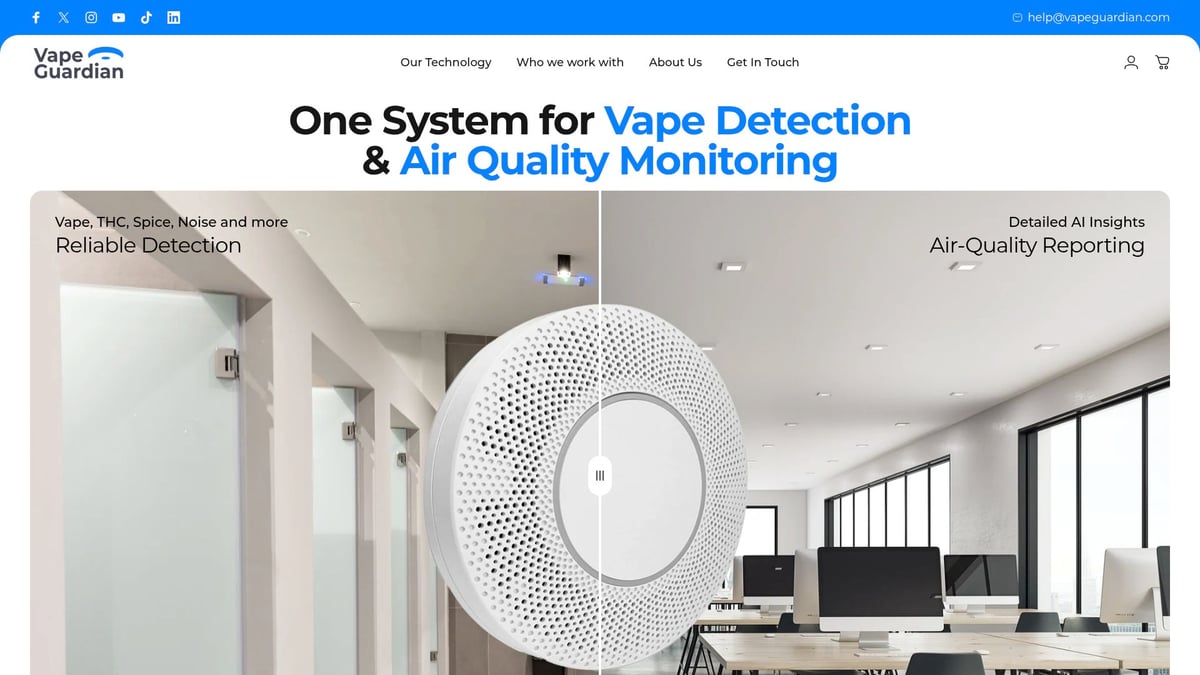
Key features include:
- High accuracy vape detection with 96 percent alert reliability
- Real time notifications to staff and administrators
- Integration with mobile apps and cloud based reporting
- Actionable insights for trend analysis and compliance
Vape Guardian has helped over 430 schools and organisations reduce vaping incidents by 94 percent, making it a trusted choice for safeguarding and compliance.
Innovations and Future-Ready Features
The latest indoor air quality sensors are evolving rapidly. Predictive analytics powered by machine learning can now identify patterns and recommend interventions before issues arise. Cloud and app based control allows remote monitoring and instant alerts.
- Automated air quality management suggestions
- Wireless and battery free sensor options for flexible installation
- Integration with smart home and building automation systems
As reporting and data transparency become more important, features like detailed PM2.5 analysis are in high demand. These innovations ensure that indoor air quality sensors remain essential tools for healthy, future ready environments.
The Future of Indoor Air Quality Monitoring
The landscape for indoor air quality sensors is evolving rapidly as technology, regulation, and public awareness drive change. Looking ahead to 2025 and beyond, innovation is shaping how we monitor, manage, and respond to indoor air quality challenges. Let us explore the trends, regulations, and the changing role of sensors in creating healthier spaces.
Emerging Trends and Technologies
Recent years have seen a surge in smart, connected indoor air quality sensors that harness artificial intelligence for predictive management. These devices now integrate seamlessly with home automation and building management systems, enabling automated ventilation and targeted responses to detected pollutants.
Wireless technology is advancing, with battery-free sensors powered by energy harvesting from light or motion. This innovation means sensors can be deployed flexibly, even in hard-to-reach areas. For example, self-powered sensors can continuously monitor air without the need for scheduled battery changes.
AI and machine learning are also transforming data analysis, providing actionable insights and early warnings. According to Low-cost sensors coupled with IoT technologies, the integration of affordable sensors with IoT platforms supports real-time air quality tracking, making advanced monitoring accessible to more users.
These developments ensure indoor air quality sensors are not just passive monitors but active participants in maintaining healthy environments.
Regulatory and Market Developments
Regulation is tightening as the health impacts of indoor air pollution become clearer. Stricter standards are emerging across the UK and EU, with a growing emphasis on transparency and accountability. Organisations are increasingly required to monitor and report on indoor air quality, especially in workplaces, schools, and healthcare settings.
The market for indoor air quality sensors is expanding rapidly. As highlighted in Indoor Air Quality Monitoring Market to Surpass $12 Billion by 2030, robust growth is anticipated as businesses and public bodies invest in compliance and health initiatives.
Environmental, social, and governance (ESG) criteria now influence procurement decisions, with companies seeking solutions that support sustainability and wellbeing. This shift is fuelling demand for reliable, transparent indoor air quality sensors that demonstrate measurable results.
The Evolving Role of Sensors in Healthy Buildings
Indoor air quality sensors are now a cornerstone of healthy building design and operation. They enable architects, facility managers, and building owners to create spaces that support occupant health, comfort, and productivity.
The adoption of frameworks such as WELL and RESET is accelerating, with these standards requiring continuous air quality monitoring as part of certification. Sensors are influencing not only new builds but also renovation projects, ensuring older buildings meet modern expectations.
Looking to the future, indoor air quality sensors will underpin the next generation of smart buildings. Their ability to provide real-time feedback and automate environmental controls makes them essential for safeguarding health and achieving high-performance, sustainable spaces.
As you can see, understanding indoor air quality sensors is essential for creating healthier, safer spaces—whether that is your workplace, school, or leisure environment. With technology evolving rapidly, it is important to choose solutions that offer real time alerts, comprehensive monitoring, and reliable support. If you are ready to take the next step in protecting your building and those within it, our team at Vape Guardian is here to help. We will guide you through selecting the right sensor, ensuring compliance, and fostering a cleaner indoor environment.
Talk to our team and protect your building today


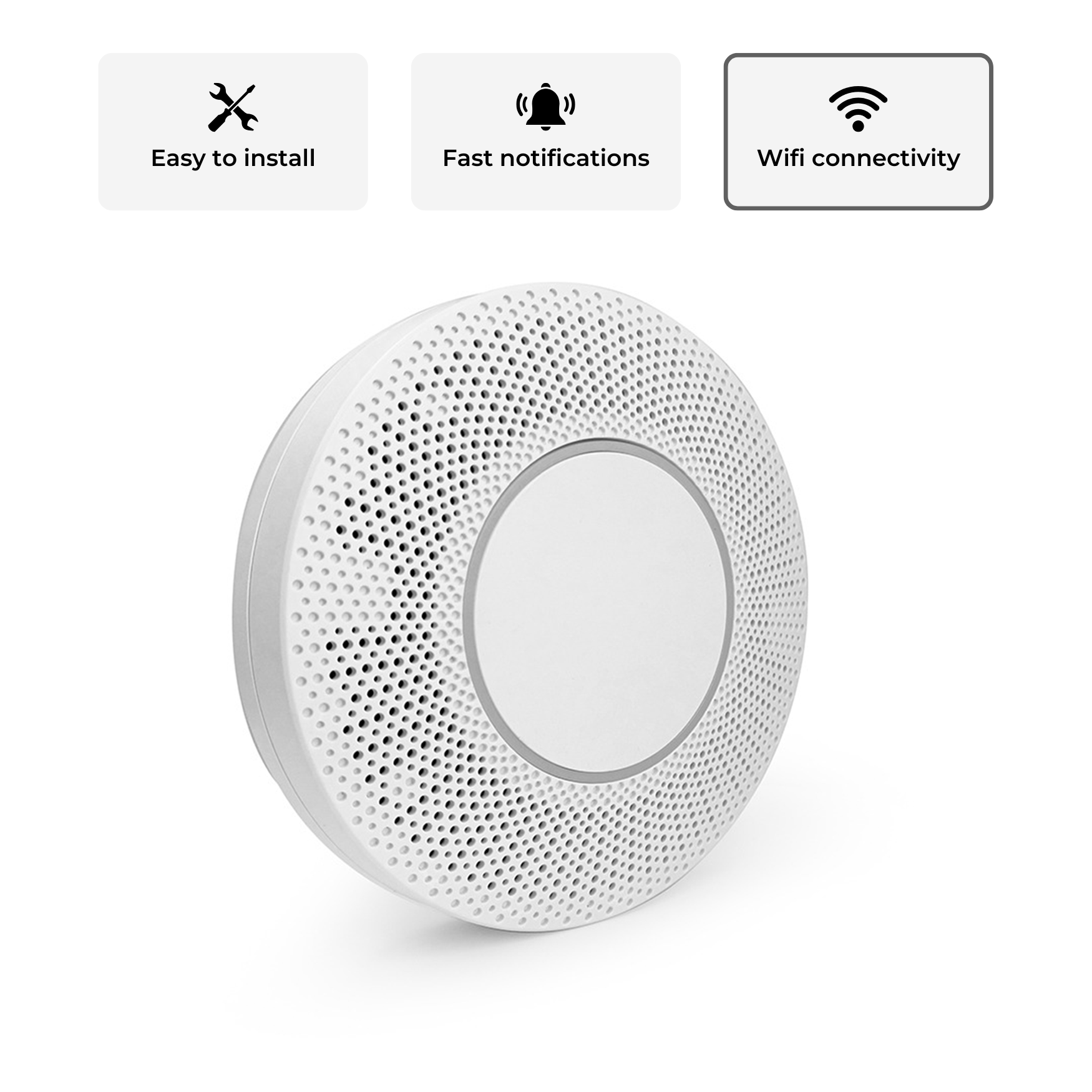
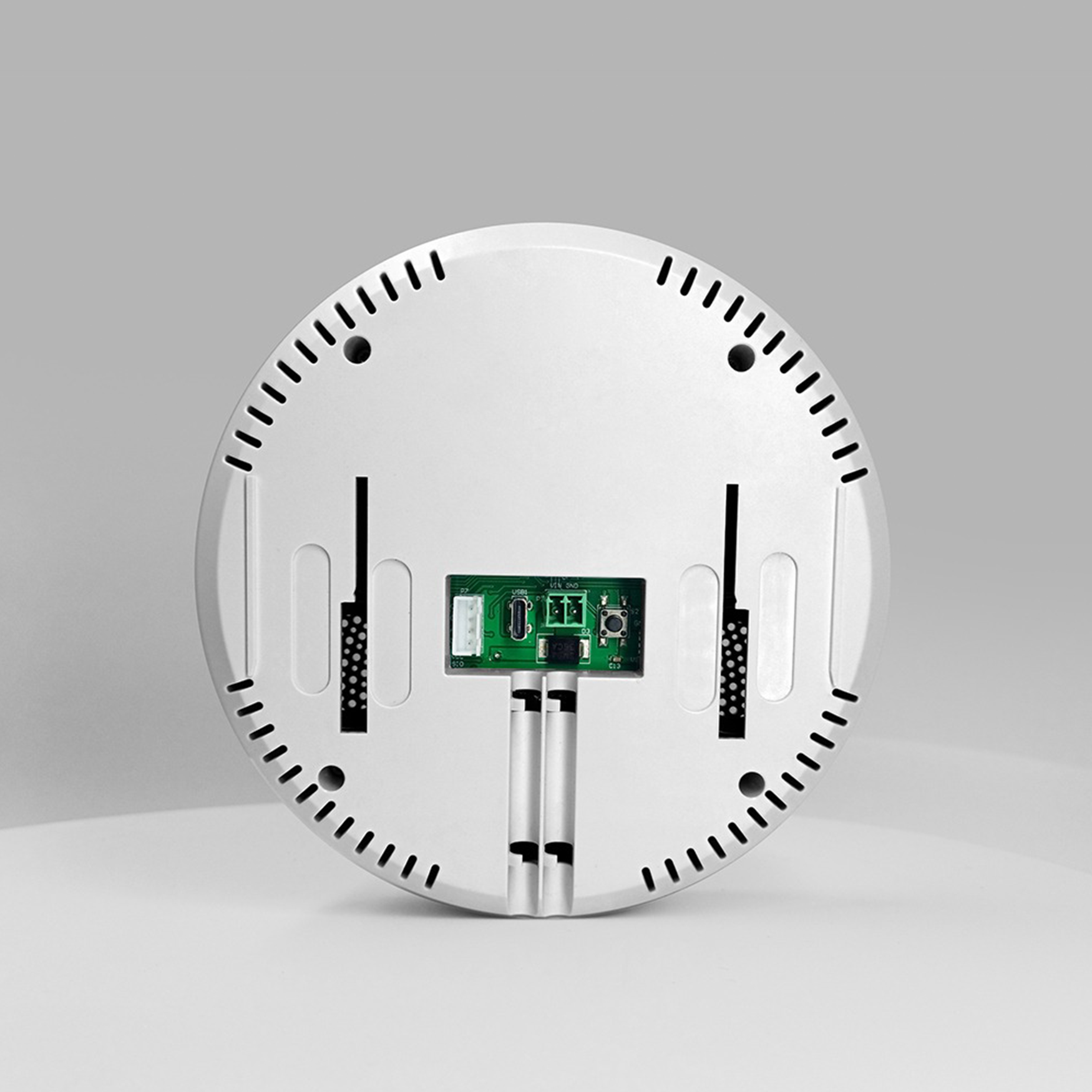

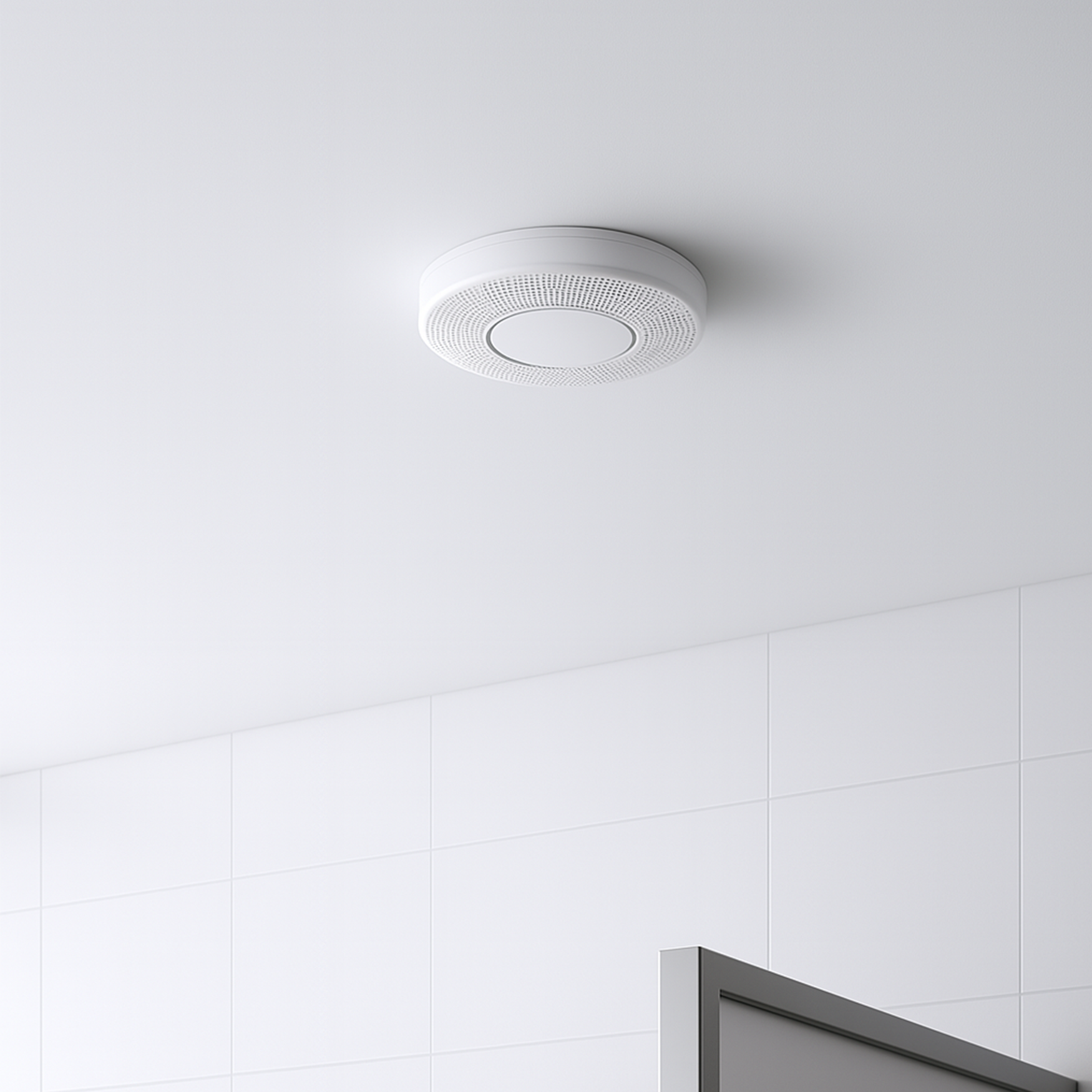
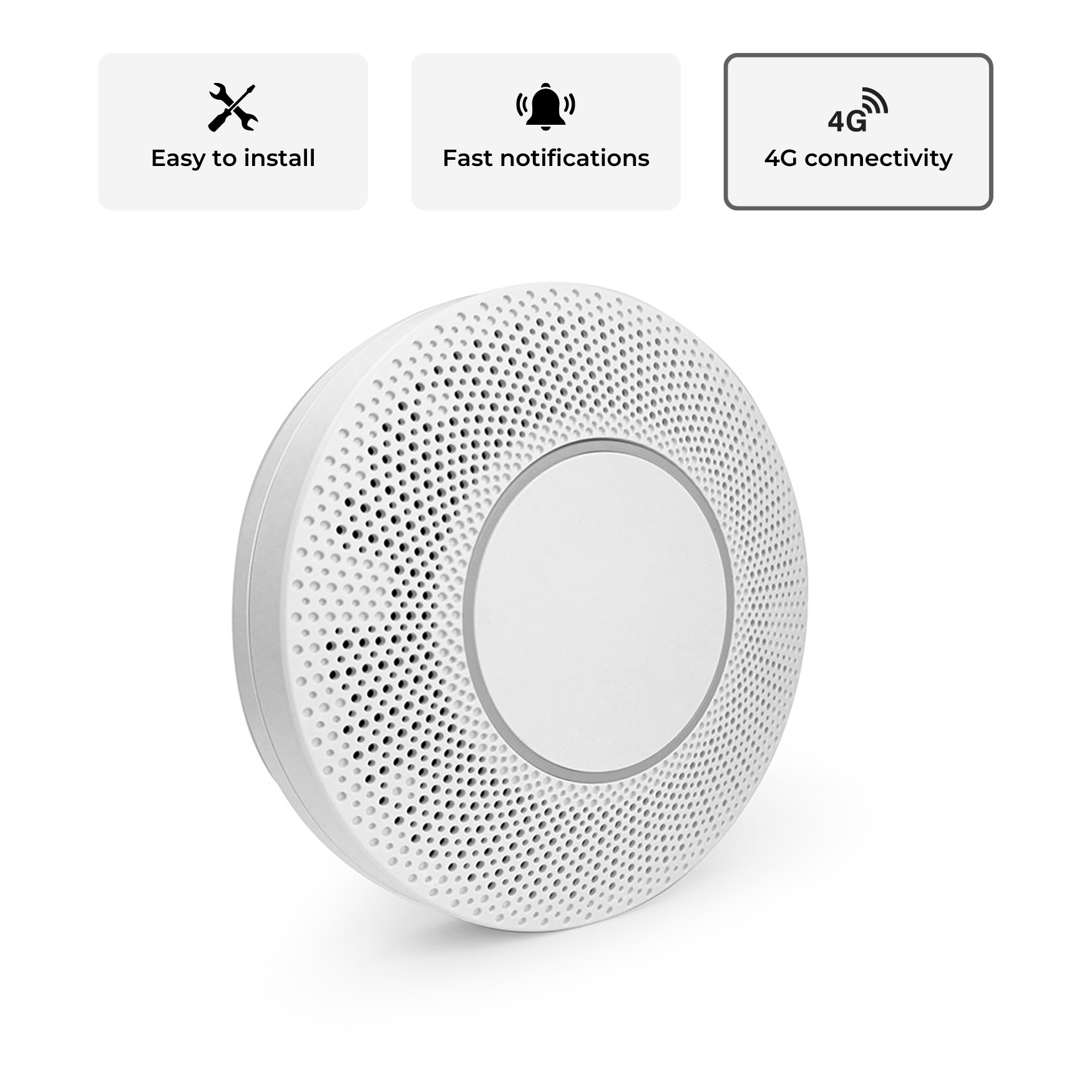
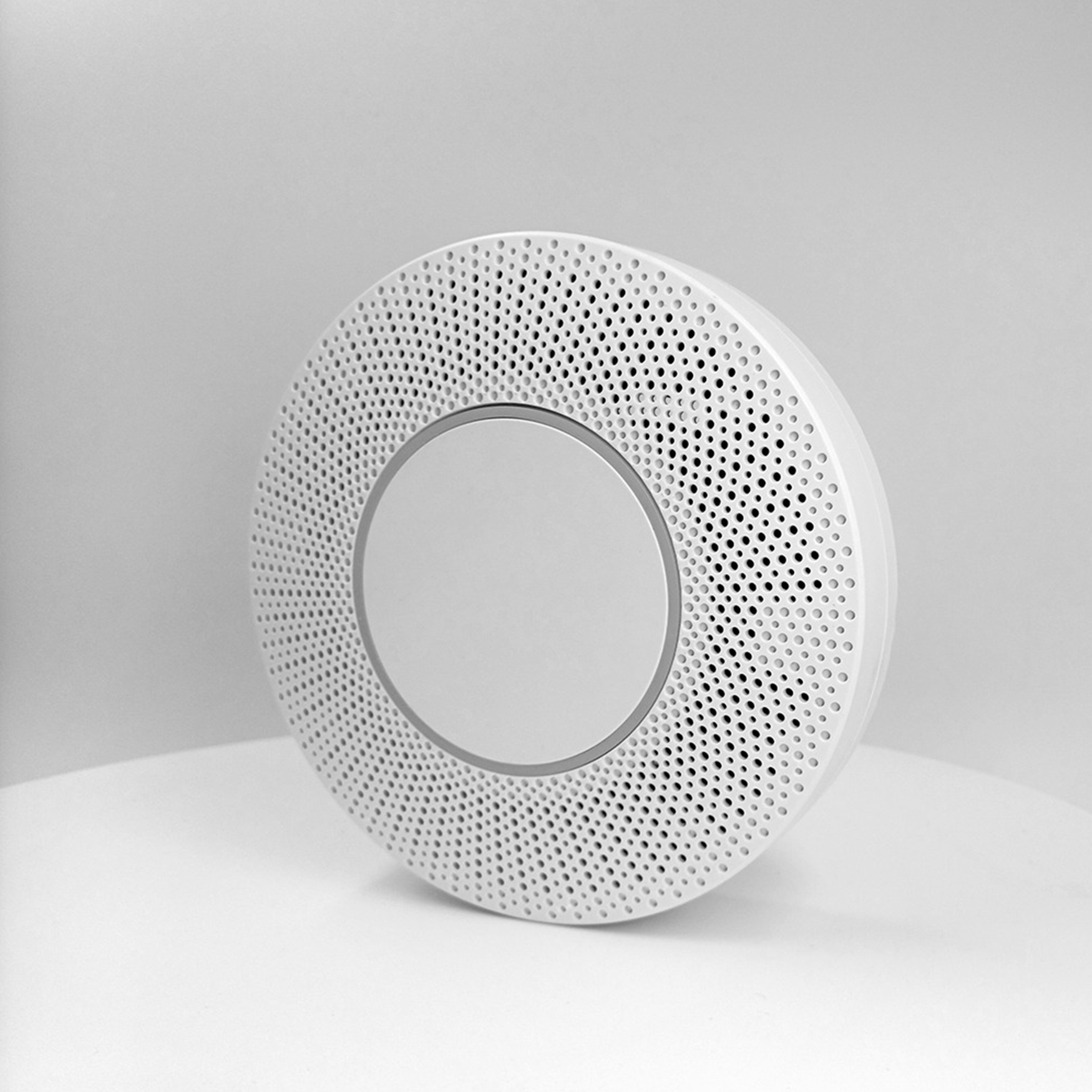
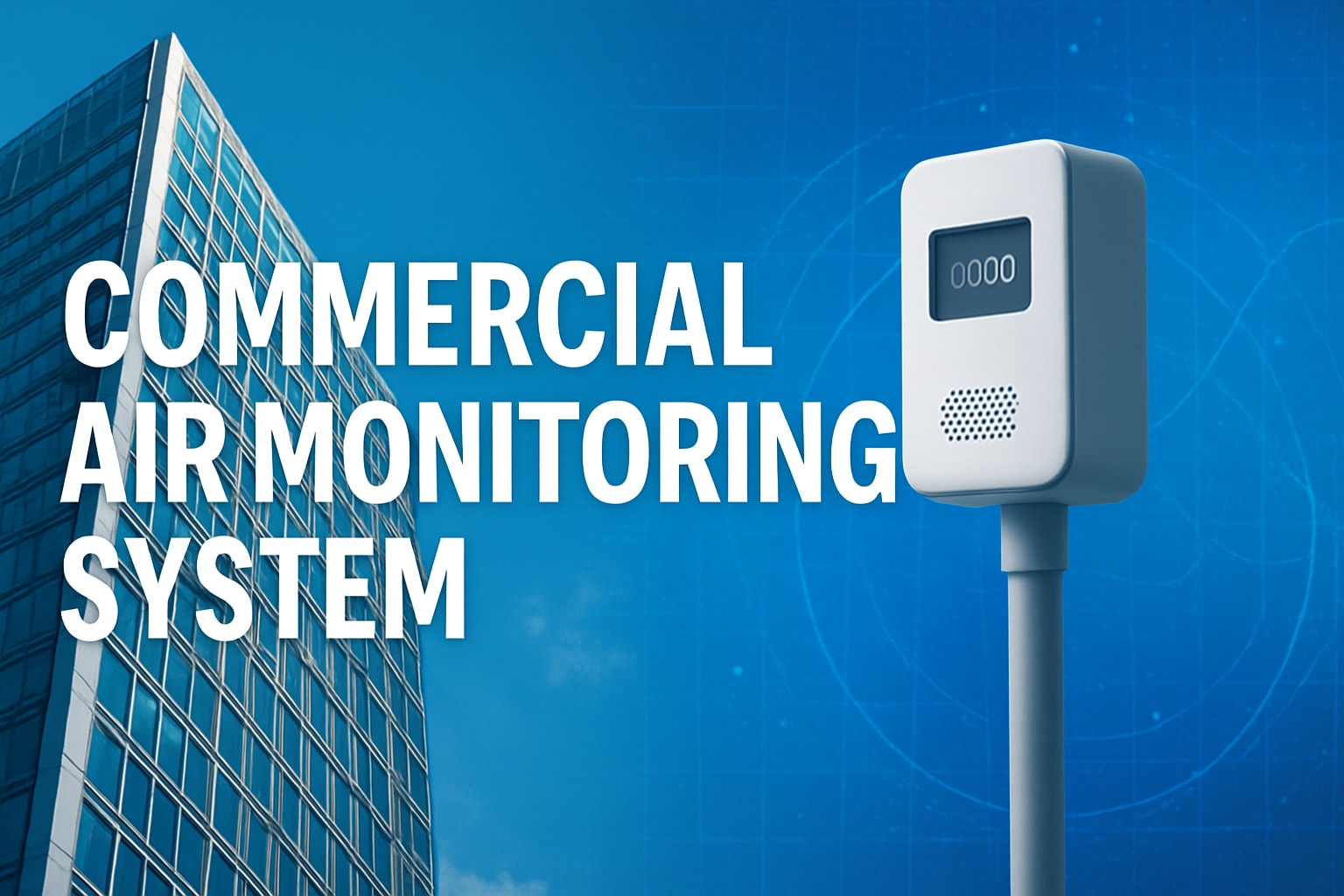


Share:
The Essential Smoking Sensor Guide for 2025
7 Innovative Uses for Smart Building Sensors in 2025